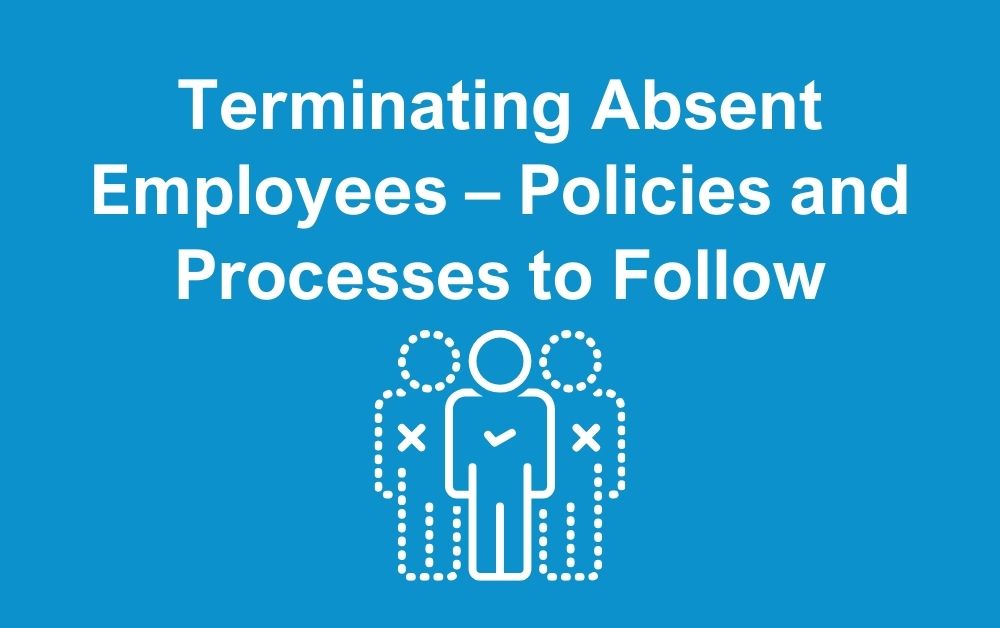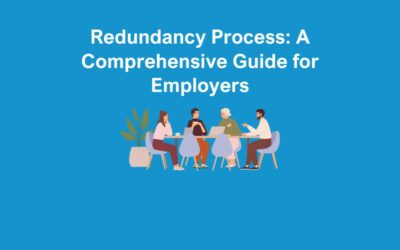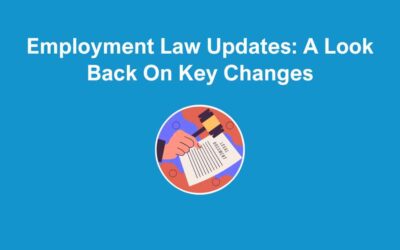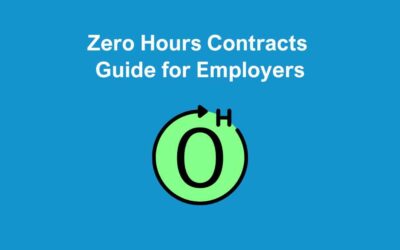Dealing with absent employees who aren’t at work due to health issues is a tough process to follow, particularly if you feel a lot of sympathy for the individual’s plight.
Terminating employees needs to be a well-managed and fair process.
However, long-term absence has a profound effect on the business and can crank up the pressure on the remaining staff, leading to increased stress and tension in the workplace.
Therefore, although it’s not an easy step to contemplate, you may well need to consider terminating the contract of absent employees. Here’s a guide to what you should do.
Never forget the formalities
You may well get on very well with the employee concerned but when it comes to this type of situation, it’s absolutely vital that you have all the documentation in place and follow your sickness procedure to the letter. If you skip something or make a mistake, you could find yourself on the losing end of a tribunal at a later date.
You should ensure that your employee has a copy of the sickness procedure at the start of any action so that they know what to expect at all times.
Legal considerations
Although you will have a process to follow – more of that below – there are some legal considerations that you should keep in mind from the start.
Demonstrating that someone is unable to do their job due to ill health isn’t an easy route and you will need to show that as the employer, you’ve been reasonable and fair at all times. This is why it’s important to get a dialogue going with the employee, right from the very start of their absence, so you can show you have been supportive and engaged since they became ill.
What exactly can be considered reasonable behaviour will vary depending on your company, but the type of factors which could be taken into account includes: • how big your company is – larger companies could be better equipped to deal with absence • the job that the absentee individual performs – how integral is it to the products or service being provided to the public • how easy it would be to continue operating without someone performing that role • the length of absence thus far • length of service • actions taken by the employer to accommodate requests or adapt the environment, or to offer alternative employment.
If the employee has been employed on a permanent contract for less than a year, a successful claim for unfair dismissal would be extremely unlikely.
If the company has more than 15 members of staff, the Disability Discrimination Act 1995 could apply and an employee could claim under this even if they have less than 12 months continuous service.
The process
The process needs to be fair, employees can’t just be got rid of!
It’s vital that every step of the process is documented and the employee is given fair warning and the right to representation, where required. Your company should have standard letters ready to send out which inform the employee of their rights and invites them to absence meetings.
Contact should be made and maintained with the employee as early as possibly in order to try and expedite a return to work. Having open channels of communication will help everyone in the long term.
When it’s time to start the formal procedure, you will need to send out an invitation to the sickness absence meeting and be prepared to rearrange it if the individual cannot attend.
Once you’ve held the initial meeting you should then suspend any action while you obtain medical information. This may be a report from the employee’s own doctor, or it could be a medical examination with an Occupational Health Physician or another specialist. The employee should be informed that you are doing this.
When you’ve received the report you’ll need to assess the contents, and decide whether it is useful to both parties to continue to hold the position open. Before you reach a final decision, you should again send an invitation to a follow-up meeting and discuss the contents of the medical report with the employee.
Only once you have conducted this meeting should you make a decision about what steps to take next. If you decide to continue to support the employee, you should agree on what happens next and whether you can make any changes to help them back to the workplace. It’s vital you stick to any agreement.
You will then need to book a review meeting and see what progress has been made. If a return to work is not imminent, you will need to follow the whole process again, getting up to date medical information and deciding whether dismissal is the right thing.
If you finally reach the stage where you’ve been providing support, offered to make changes and have medical evidence showing they are still not fit for work, you’ll need to invite them to another meeting to discuss the dismissal. You should make the purpose of the meeting clear in your invitation.
You should not make the decision during the meeting, but take the information provided by the employee away to consider along with the rest of the evidence you hold. If you decide to dismiss them, you will need to put this in writing, but you may prefer to break the news to them face to face, handing them the letter as confirmation. This is not a legal requirement so much will depend on the individual circumstances.
Conclusion
The key to terminating absent employees is being scrupulously fair at all times and following your written company procedures without fail. Document every conversation, every attempted telephone call and every action, just in case you are questioned at a later date. You may feel like you are holding a lot of evidence but if a case for unfair dismissal is brought, you will be glad you have your records to refer to.
For more information contact us at The HR Booth on 01383 668178 or email us at info@thehrbooth.co.uk







